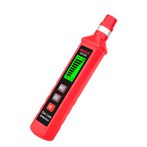The difference between two-photon microscopy and laser confocal microscopy
Laser confocal microscope is a set of observation, analysis, and output systems that use laser as the light source, conjugate focusing principle and device on the basis of traditional optical microscope, and digital image processing of the observed object using a computer. The main systems include laser light sources, automatic microscopes, scanning modules (including confocal optical path channels and pinholes, scanning mirrors, detectors), digital signal processors, computers, and image output devices (displays, color printers). By using a laser scanning confocal microscope, it is possible to perform tomography and imaging of the observed sample. Therefore, it is possible to observe and analyze the three-dimensional spatial structure of cells without damage.
At the same time, laser scanning confocal microscopy is also a powerful tool for dynamic observation of live cells, multiple immunofluorescence labeling, and ion fluorescence labeling. It accurately analyzes the essence of the spectrum and distinguishes signals from different labels with highly overlapping emission spectra.
The most important thing is that for multi-color fluorescence staining, it can completely eliminate the influence of fluorescence crosstalk, while minimizing the loss of sample fluorescence signal. These are all things that ordinary mirrors cannot achieve.
The focal length relationship between microscope objective and eyepiece
Different principles
1. Fluorescence microscope: It uses ultraviolet light as a light source to illuminate the object being tested, causing it to emit fluorescence, and then observe the shape and position of the object under the microscope.
2. Laser confocal microscope: On the basis of fluorescence microscopy imaging, a laser scanning device is installed to excite fluorescence probes using ultraviolet or visible light.
Different characteristics
1. Fluorescence microscope: used to study the absorption, transportation, distribution, and localization of substances within cells. Some substances in cells, such as chlorophyll, can emit fluorescence after being exposed to ultraviolet radiation; Some substances themselves may not emit fluorescence, but if stained with fluorescent dyes or fluorescent antibodies, they can also emit fluorescence under ultraviolet radiation.
2. Laser confocal microscope: Using a computer for image processing to obtain fluorescent images of the internal microstructure of cells or tissues, and to observe physiological signals such as Ca2+, pH value, membrane potential, and changes in cell morphology at the subcellular level.





